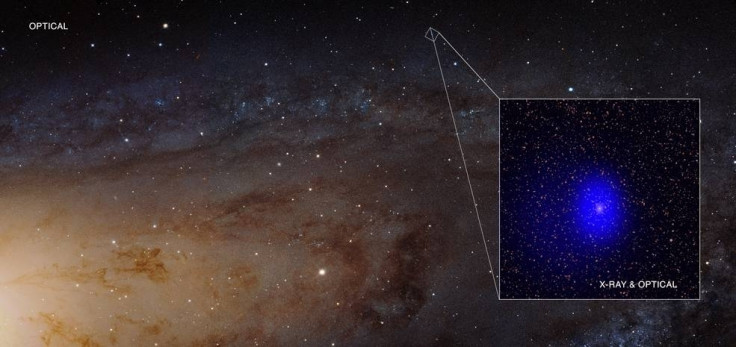This week in space: A new giant deadly planet, mysterious space signals, ISS alien bacteria and more
IBTimes UK's science team brings you the biggest and most sensational space stories of the week.
It's been a busy week for astronomers with numerous new studies and observations announced that revealed exciting information about the mysteries buried in the depths of outer space. This week saw new observations made by China's dark matter satellite DEMPE – fondly called the Monkey King satellite. The Chinese satellite detected mysterious space signals that could be the very first proof of the existence of dark matter.
The week also saw astronauts discover living organisms on the hull of the International Space Station, which led to widespread speculation about whether extraterrestial microbial life could finally have been discovered.
IBTimes UK brings you the highlights of the best space stories of the week to keep all you space enthusiasts up to date on what's happening beyond our planet.
A new massive planet with a deadly atmosphere found that baffles scientists
Nasa found a new planet — WASP-18b — 10 times the size of Jupiter, with highly unusual features that has baffled researchers. The planet is surrounded by deadly carbon monoxide, has absolutely no water and extremely high temperatures, making it a highly inhospitable world.
Supermassive black hole has really close neighbours
Astronomers found a supermassive black hole with an unusually close neighbour — a young star —located just three light years away. The observation baffled researchers, given anything close to black holes are expected to be disintegrated due to powerful energy emanating from black holes and the surrounding harsh conditions. Scientists are still unclear as to how the star has been able to escape a dire end despite being so close to the supermassive black hole.
"Invisible" space junk is of real interest to Nasa
Nasa said that it intends to study microscopic space debris that is too small to be observed from the Earth. The space agency will use a new sensor that will be flown to the ISS this month. Nasa hopes the research will help it determine the origins of the mysterious space junk and figure out their trajectories.
China's rogue space station is on a death spiral and will crash on Earth next year
China's Tiangong-1 space station has been causing quite a buzz. The Chinese space agency is believed to have lost contact with it last year and the space station has since been making a rapid dive toward the Earth. Experts estimate that the space station will crash land on Earth sometime in March 2018. The rogue space station may be carrying a highly toxic substance called hydrazine that some suspect may survive re-entry. However, experts say that the expected crash is unlikely to cause any damage or strike any individuals.

Supermassive black holes photobomb Andromeda galaxy
Nasa has captured an incredible image of two tightly wound supermassive black holes photobombing the Andromeda galaxy. Scientists estimate that within the next 350 years the two giant black holes could merge into one.
Nasa says hidden oceans on icy worlds like Pluto could host alien life
In a new study, Nasa found that icy worlds like Pluto, could still have oceans hidden beneath their surface, that could likely host alien life. The space agency said that it has recently detected signs of liquid water buried beneath the icy surfaces of Trans-Neptunian Objects (TNO).
"These objects need to be considered as potential reservoirs of water and life," Nasa's Prabal Saxena, lead author of the research said. "If our study is correct, we now may have more places in our solar system that possess some of the critical elements for extraterrestrial life."






